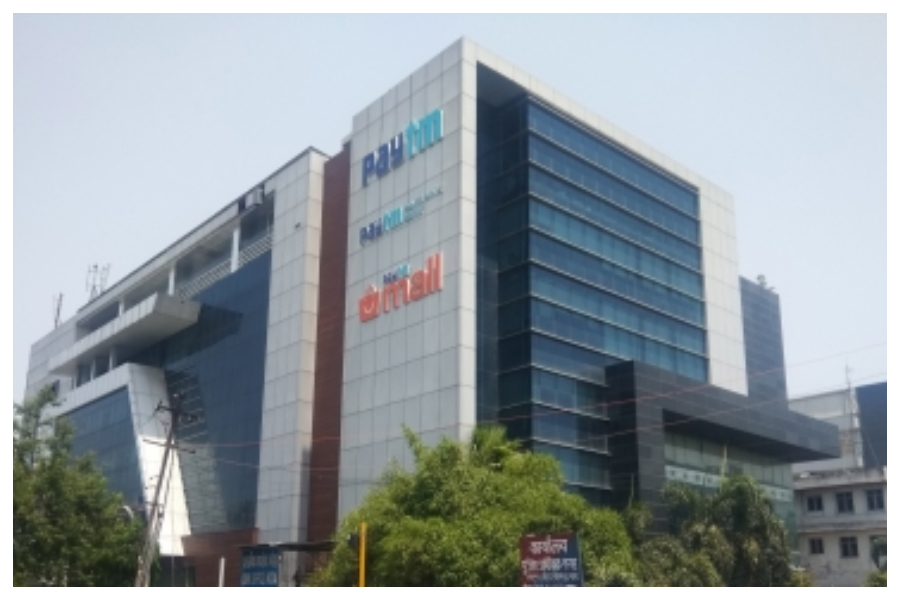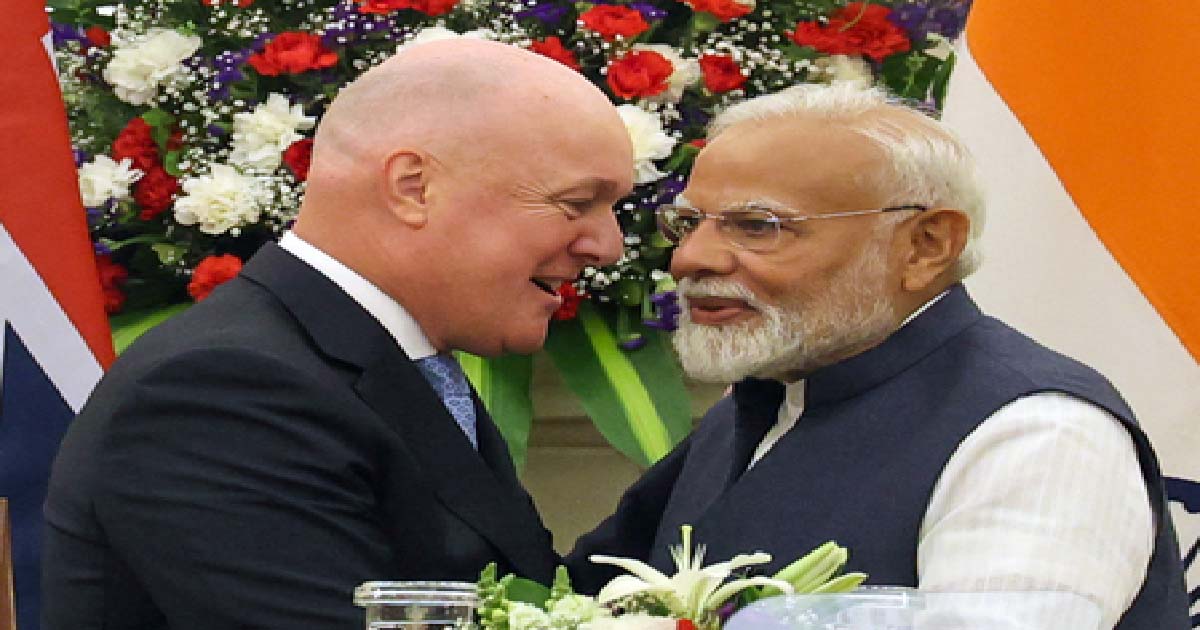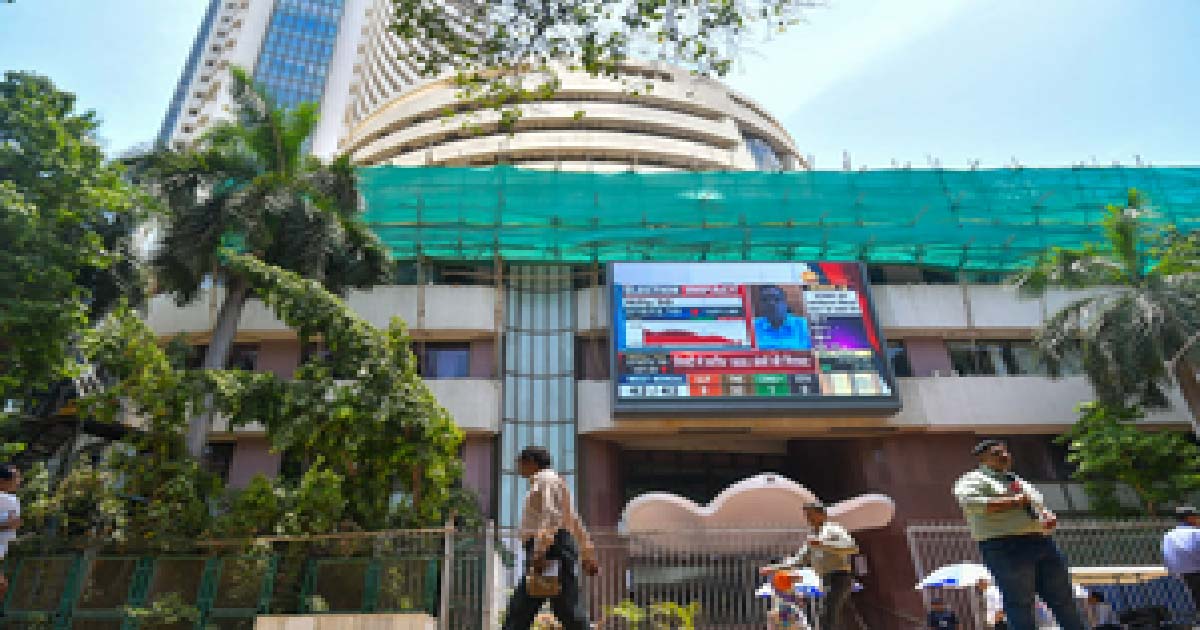Business
Goldman Sachs says Paytm’s current share price is a compelling entry point, ICICI Securities issue Buy rating

Paytm continues to get the confidence of top brokerages, who are bullish about the companys “immense growth potential”. Goldman Sachs pointed out the strong growth potential for Paytms lending business, saying the firm will hit $10 billion in disbursals by FY26E, vs $900 million in FY22.
Analysts believe Paytm’s ESOP costs will gradually reduce and are currently at par with other listed tech cos in India as well as globally ICICI Securities report said that by FY26, Paytm’s monthly transacting users are likely to double
Paytm, India’s leading digital payments and financial services, continues to get ‘Buy’ calls from top brokerages. After Goldman Sachs, BofA, Morgan Stanley and Dolat Capital, ICICI Securities has also issued a Buy rating for Paytm.
Goldman Sachs had given Paytm a Buy rating, with a target price of Rs 460 on February 7. On Monday, the investment bank reiterated its Buy rating, pointing out key notes for investors. The report said that “the current share price offers a compelling entry point into India’s largest and amongst the fastest growing fintech platforms”.
ICICI Securities has now initiated coverage for Paytm and highlighted the company’s strong growth potential in terms of target addressable market (TAM), giving a “Buy’ rating and target price of Rs 1,362.
Goldman Sachs highlighted that Paytm continues to gain market share across both UPI and non-UPI payments, besides strong growth in lending business. It said Paytm’s net payments take rate or spreads have, defined as revenue less payment processing charges (PPC) as a proportion of Gross Merchandise Value (GMV) have been improving.
“Paytm’s net payments take rate (or spreads, defined as revenue less payment processing charges as a proportion of GMV) have been improving. From 8 bps in 3QFY22, we forecast spreads to widen to 11 bps by FY26E as a result of Paytm’s scale benefits; increasing share of UPI for wallet money addition; rising share of wallet for online payments (vs in-store, which have zero MDR); and rising share of device rental revenues,” the brokerage noted.
Paytm’s ESOP costs to gradually reduce, currently at par with other listed tech cos in India as well as globally.
Goldman Sachs noted that Paytm’s Employee Stock Ownership Plan (ESOP) costs will reduce gradually and is currently at par with other listed tech companies in India as well as globally.
“We forecast ESOP charge for Paytm to be highest (at Rs 3.9 billion per quarter) for first two years (when the first tranche vests, per Paytm), and then gradually reduce over the next three years. Paytm also has about 15 million un-granted options and per our estimate, the total share count could increase by 46 million (or 7 per cent of current outstanding), if all options were to be vested/granted,” said the Goldman Sachs note.
“We note that as a proportion of total operating expenses, Paytm’s ESOP cost is not significantly different vs other global platforms such as Airbnb and DoorDash, as well as recently listed India internet peers such as Zomato and PB Fintech.”
Meanwhile, ICICI Securities in its note called out Paytm’s immense growth potential in terms of target addressable market (TAM), buoyed by its leadership position in India’s digital payments ecosystem.
The brokerage said Paytm’s digital payments business has the potential to grow strongly in future, reflecting its “sizeable two-sided digital ecosystem with proven leadership in payments”.
“Paytm is well ahead in the race of digitisation, building a robust full stack technology suite integrated across the ecosystem with distinct features, high success rates, easy user interface, and customer convenience. It has an early mover advantage in rolling out wallet, FASTag, and is ahead of the curve in (skill based) online gaming, too,” said the note by ICICI Securities.
During the October-December quarter, the company saw its revenues jump by 89 per cent y-o-y to Rs 1,456 crore, EBITDA losses (before ESOP expense) came down to Rs 393 crore from Rs 488 crore during the same quarter in the previous year.
In its latest filing with the stock exchange, Paytm had shared its highest ever growth in monthly transacting users to 68.9 million users. Now, it seems analysts are bullish about this growth momentum to continue. ICICI Securities highlighted that Paytm’s monthly transacting user base (MTUs) is likely to double over FY22-26E to more than 120 million.
Paytm had said that in Q3 FY 22, its merchant payments-led GMV stood at Rs 2.5 lakh crore. Analysts at ICICI Securities forecast that Paytm’s merchant GMV would grow at 36 per cent CAGR over FY22-26E to reach Rs 30 trillion and within this, MDR linked GMV is estimated to grow at more than 25 per cent.
The brokerage noted that Paytm’s contribution margin has potential to further improve 40 per cent-46 per cent by FY24E/FY26E.
“Aided by this contribution margin, there is some visibility of EBITDA getting into positive territory post FY26E. Adjusted EBITDA margin (excluding non-cash ESOP charges) will turn positive by FY26,” it added.
Both Goldman Sachs and ICICI Securities believe that Paytm’s lending business, in which it partners financial institutions to provide loans on its platform, has the potential to grow rapidly in the medium term.
Goldman Sachs said: “We believe Paytm will be able to continue to scale its lending portfolio, and forecast $10 billion in disbursals by FY26E, vs $900 million in FY22. Paytm has continued to add new partners for its lending products over the last few quarters, suggesting to us that lenders are finding value in this partnership.”
Paytm’s lending business witnessed record growth in January 2022, maintaining the positive trend witnessed in the Q3 FY 22 earnings. Last month, Paytm registered 1.9 million loan disbursals, marking a y-o-y growth of 331 per cent; aggregating to a total value of Rs 921 crore (y-o-y growth of 334%). This also included a staggering growth in its Buy Now, Pay Later product – Paytm Postpaid.
“For Paytm’s BNPL product, 30 per cent + of the monthly sign-ups (Dec ’21 quarter) were new-to-credit customers, helping expand the credit base for Paytm’s financial partners. Per Paytm, performance of the company’s loan portfolio has resulted in higher confidence from lenders to increase the scale of this business,” it added.
Meanwhile, ICICI Securities also shared an optimistic outlook about Paytm’s lending business, estimating 18-19 million consumers (15 per cent of MTUs), and an increasing number of merchants to avail lending products through Paytm platform by FY26E.
Sharing a medium-term outlook, it estimated the total lending business revenue to grow at 61 per cent over FY22-26E.
Business
India-New Zealand FTA: PM Modi, Luxon aim to double bilateral trade over 5 years

New Delhi, Dec 22: Prime Minister Narendra Modi held a telephone conversation with New Zealand’s Prime Minister, Christopher Luxon, on Monday as the two leaders jointly announced the successful conclusion of the historic, ambitious and mutually beneficial India-New Zealand Free Trade Agreement (FTA).
During the conversation, both leaders expressed confidence in doubling bilateral trade over the next five years as well as an investment of $20 billion in India from New Zealand over the next 15 years.
The negotiations began in March this year and the two leaders concluded the FTA in a record time of nine months, reflecting the shared ambition and political will to further deepen ties between the two countries, according to a statement from Prime Minister’s Office (PMO).
“The FTA would significantly deepen bilateral economic engagement, enhance market access, promote investment flows, strengthen strategic cooperation between the two countries, and also open up new opportunities for innovators, entrepreneurs, farmers, MSMEs, students and youth of both countries across various sectors,” said the statement.
The leaders also welcomed the progress achieved in other areas of bilateral cooperation such as sports, education, and people-to-people ties, and reaffirmed their commitment towards further strengthening of the India-New Zealand partnership.
This historic FTA eliminates and reduces tariffs on 95 per cent of New Zealand’s exports – among the highest of any Indian FTA – with almost 57 per cent being duty-free from day one, increasing to 82 per cent when fully implemented, with the remaining 13 per cent subject to sharp tariff cuts.
It puts New Zealand exporters on an equal or better footing to our competitors across a range of sectors and opens the door to India’s rapidly expanding middle class, according to an official statement from New Zealand.
“The Indian economy is forecast to grow to NZ$12 trillion by 2030. The India-NZ Free Trade Agreement unleashes huge potential for our world-class exporters to the world’s largest country and will significantly accelerate progress towards New Zealand’s ambitious goal of doubling the value of exports over 10 years,” it added.
Business
Mumbai-Bound Air India Flight Returns To Delhi Airport Minutes After Take Off Due To Technical Glitch

New Delhi: A Mumbai-bound Air India flight AI887 returned to the Delhi Airport minutes after take-off due to a technical issue. The Delhi–Mumbai flight made an emergency landing according to standard operating procedure.
As perv an Air India spokesperson, the aircraft (Boeing 777) landed safely at Delhi, and the passengers and crew disembarked.
The Boeing 777 suffered an engine issue soon after take-off, reported The Times of India. The aircraft reportedly took off at 6.10 am and returned to the airport at 6.52 am. The aircraft is currently undergoing necessary checks.
As per the report, the airline arranged another B777 (VT-ALP) for passengers and even provided refreshments for them.
On Sunday, over 100 flights were cancelled from the Delhi Airport due to dense fog conditions in the national capital. Meanwhile, more than 400 flights were also delayed at the airport.
Over the past few days, most parts of the nothern and northwestern regions of the country are witnessing dense fog condition.
“Dense to very dense fog conditions during night/morning hours very likely in some parts of Uttarakhand, Uttar Pradesh, Haryana till morning hours of 21st; in isolated pockets of Punjab, Haryana during 25th-27,” the India Meteorological Department (IMD) had said in its press statement on Sunday.
On Friday also, an Air India flight travelling from Mumbai to Varanasi was forced to make an emergency diversion to Bhubaneswar after deteriorating weather conditions made landing at the destination airport unsafe. The aircraft landed at Biju Patnaik International Airport (BPIA) as a precautionary measure, airline officials confirmed.
Business
Sensex, Nifty open in green zone amid positive global cues

Mumbai, Dec 22: Indian benchmark indices opened in green zone on Monday, breaking the last week’s trend of edging lower, amid strong buying in the US and China markets.
As of 9.30 am, the Sensex advanced 507 points, or 0.60 per cent, at 84,436 and the Nifty added 165 points, or 0.64 per cent to 26,132.
The broad cap indices performed in line with the benchmarks, with the Nifty Midcap 100 up 0.58 per cent and the Nifty Smallcap 100 adding 0.51 per cent.
Hindalco, Tech Mahindra and TCS were among the major gainers in the Nifty Pack, while losers included Asian Paints, Bajaj Finance, Max Healthcare and Cipla.
All the sectoral indices on NSE were trading in the green with metal, IT and media being the major gainers — up around 1.48, 1.23 and 0.77 per cent, respectively.
Analysts noted that market is likely heading for a year-end rally. The rupee’s sharp reversal and FIIs’ cash market purchases can accelerate this rally, as they lead to short covering, pushing benchmark indices higher. The Goldilocks domestic economic set up and potential earnings growth uptrend can support a market upturn, they added.
The US markets ended mostly in the green zone on the last trading day, as Nasdaq advanced 1.31 per cent, the S&P 500 edged up 0.88 per cent, and the Dow moved up 0.38 per cent.
As investors parsed China’s central bank keeping loan prime rate steady, Asia-Pacific markets rose on Monday.
The People’s Bank of China maintained its 1-year and 5-year loan prime rates steady, which affects most new and outstanding loans and mortgages.
In Asian markets, China’s Shanghai index advanced 0.64 per cent, and Shenzhen dropped 1.36 per cent, Japan’s Nikkei edged up 1.75 per cent, while Hong Kong’s Hang Seng Index added 0.29 per cent. South Korea’s Kospi added 1.72 per cent.
On Friday, foreign institutional investors (FIIs) sold equities worth Rs 2,387 crore, while domestic institutional investors (DIIs) were net buyers of equities worth Rs 5,200 crore.
-

 Crime3 years ago
Crime3 years agoClass 10 student jumps to death in Jaipur
-

 Maharashtra1 year ago
Maharashtra1 year agoMumbai Local Train Update: Central Railway’s New Timetable Comes Into Effect; Check Full List Of Revised Timings & Stations
-

 Maharashtra1 year ago
Maharashtra1 year agoMumbai To Go Toll-Free Tonight! Maharashtra Govt Announces Complete Toll Waiver For Light Motor Vehicles At All 5 Entry Points Of City
-

 Maharashtra1 year ago
Maharashtra1 year agoFalse photo of Imtiaz Jaleel’s rally, exposing the fooling conspiracy
-

 National News1 year ago
National News1 year agoMinistry of Railways rolls out Special Drive 4.0 with focus on digitisation, cleanliness, inclusiveness and grievance redressal
-

 Maharashtra1 year ago
Maharashtra1 year agoMaharashtra Elections 2024: Mumbai Metro & BEST Services Extended Till Midnight On Voting Day
-

 National News1 year ago
National News1 year agoJ&K: 4 Jawans Killed, 28 Injured After Bus Carrying BSF Personnel For Poll Duty Falls Into Gorge In Budgam; Terrifying Visuals Surface
-

 Crime1 year ago
Crime1 year agoBaba Siddique Murder: Mumbai Police Unable To Get Lawrence Bishnoi Custody Due To Home Ministry Order, Says Report














